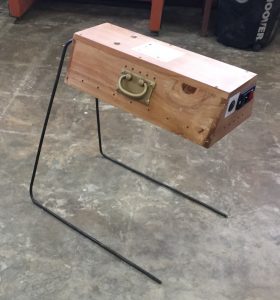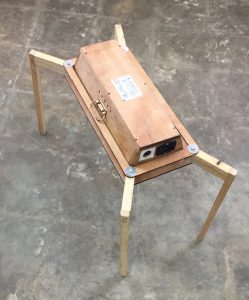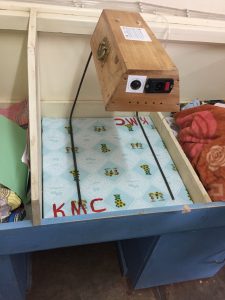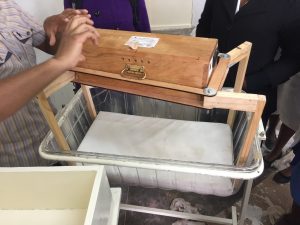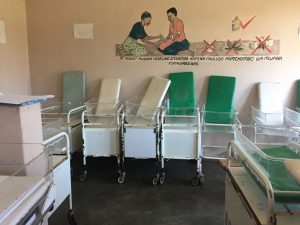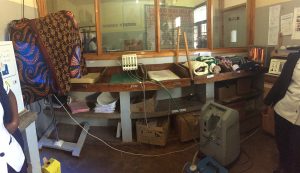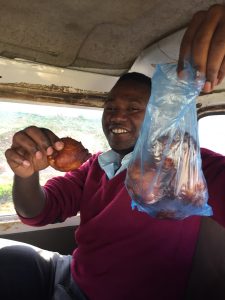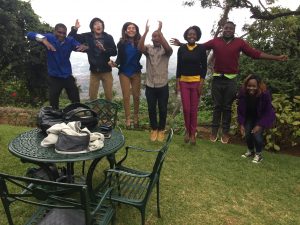Last week was a busy one filled with prototyping! First, we tackled building the stand itself along with a mechanism to rotate the light upwards, and decided to address the challenge of locking the light in the upward position after we had conquered the first two goals.
For the stand, we decided to maintain the rebar base from the initial prototype that we showed in hospitals because it is durable, flat enough to fit under a baby’s mattress, and the shape can be easily modified by squeezing or pulling the metal legs of the stand. In the previous prototype, the rebar actually looped inside of the light and was held in place internally. To make the light able to rotate, we externalized the rebar stand from the light completely by sandwiching the bar that was inside the light between two blocks of wood. The light was then connected to the wooden blocks with a hinge.



We soon realized that this method took up too much precious real estate over the baby’s bed, offsetting the light from being centered over the baby and rendering it less effective. To combat this, we shifted the horizontal wood/metal sandwich to a vertical position. This solved the space problem, but we found that the stability of squeezing rebar between two blocks of wood wasn’t the best. To address this, we cut a groove out of the wooden blocks using a CNC milling machine and bolted the two blocks together around the rebar that fit snuggly in the grooves.


On Thursday, we worked on producing several stands to give to training hospitals for use. Although they were not completely at the point we wanted them to be at (we still had no mechanism to hold the light up in the rotated position), we were able to make slight modifications so that we could at least give them a few stands that previewed what was to come.


Besides lots of iterative prototyping, this week was also filled with independence celebrations! Tuesday was American Independence Day. We were all missing home a little, so we decided to have our very own barbecue! We grilled burgers on a braii stand (charcoal grill), found “American Style Fries” at the store, and listened to patriotic music. Although we didn’t have fireworks, we lit candles and used our imagination.
Thursday was Malawian Independence Day, but we opted to work Thursday so we could take Friday off and spend a long weekend at the lake! It was a lovely and relaxing time — we read on the beach, snorkeled, swam, and explored the local town.


-S






